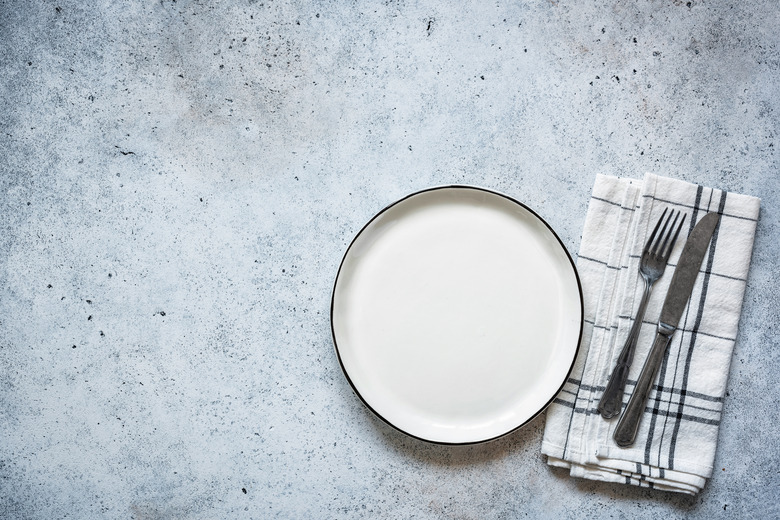Differences Between Earthenware, Stoneware And Ironstone
Earthenware, stoneware and ironstone are all terms used to describe pottery types that are similar but not exactly the same. Whether you collect ironstone dishes or are simply trying to stick with one theme for dishware or pottery, learning the basic differences can help keep you on track. Earthenware and stoneware are made from different types of clay, while ironstone is a type of stoneware developed in the early 1800s.
Earthenware and Stoneware Differences
Earthenware and Stoneware Differences
The type of clay used to make a dish, pitcher or plant pot ultimately determines whether the finished piece is called earthenware, stoneware or even porcelain. Just like soil, clay used for pottery has different traits, depending upon its source. Unglazed earthenware stays slightly porous even after it is fired or hardened in a kiln. It is ideal for plant pots as it retains some moisture that helps prevent the soil from drying out. Most earthenware is too porous to go into a dishwasher or even the microwave.
Stoneware, which takes a little more heat to harden in a kiln, is not porous once it's completely hardened. This makes it a good choice for bakeware, dishware and items that will be used or washed frequently. Stoneware dishes are often thick and a bit heavy.
Porcelain takes the highest heat to cure to hardness. Made from a finer clay than stoneware or earthenware, porcelain is durable enough to create even thin pieces such as teacups. Depending upon the glazes used, finished porcelain pieces may be translucent when held up to a light source.
Ironstone Dishware Origins
Ironstone Dishware Origins
Ironstone was first developed in the early 1800s in England as a less expensive alternative to porcelain. Experimenting with stoneware clay, early ironstone dinnerware producers crafted a durable and dense opaque material that resembled porcelain and was easier and less expensive to mass produce. Many of the pieces created in the early years of ironstone featured Chinese or Japanese themes, again an attempt to emulate porcelain. Several manufacturers sold ironstone products under different names, such as "English porcelain," "stone china," "new stone" or "semiporcelain," according to Encyclopedia Britannica.
Some ironstone pieces are plain, off-white or slightly bluish, without any designs in the glaze. Designs on such pieces are usually formed into the shape of the item. Some plain ironstone is highly collectible; even Martha Stewart collects such pieces.
Much of the early "flow blue" pottery, initially produced in England for export to the United States, was also made of ironstone. Flow blue items featured slightly blurry designs in blue against a white ironstone background.
Not Always Marked
Not Always Marked
Not all manufacturers marked their ironstone creations, so it could be hard to tell if a piece is really antique ironstone. Some manufacturers included the word "ironstone" in their makers' marks, which makes such pieces easy to identify. In some cases, collectors' books and organizations such as the White Ironstone China Association can be a great help in narrowing down an era and manufacturer for a specific ironstone piece. Such resources may offer catalogs or photos of makers' marks or of specific ironstone pieces, such as soup ladles or pitchers.
